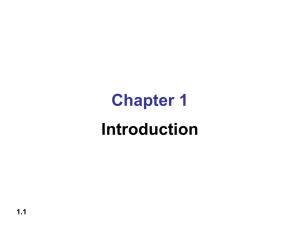Examination 2
advertisement
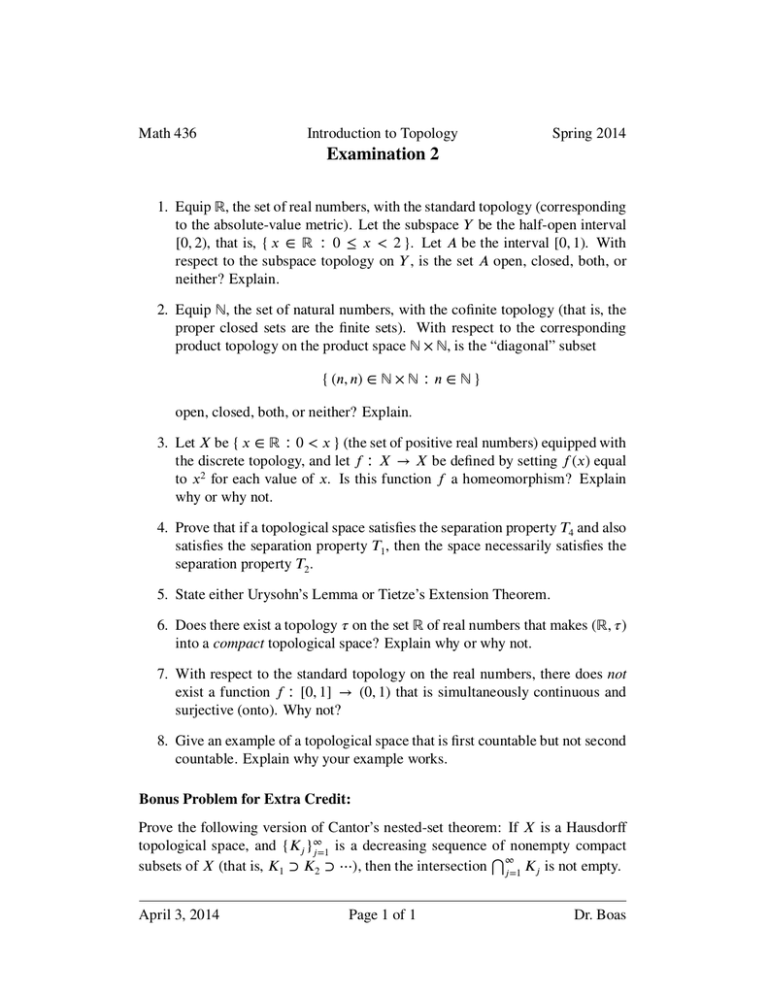
Math 436
Introduction to Topology
Spring 2014
Examination 2
1. Equip ℝ, the set of real numbers, with the standard topology (corresponding
to the absolute-value metric). Let the subspace 𝑌 be the half-open interval
[0, 2), that is, { 𝑥 ∈ ℝ ∶ 0 ≤ 𝑥 < 2 }. Let 𝐴 be the interval [0, 1). With
respect to the subspace topology on 𝑌 , is the set 𝐴 open, closed, both, or
neither? Explain.
2. Equip ℕ, the set of natural numbers, with the cofinite topology (that is, the
proper closed sets are the finite sets). With respect to the corresponding
product topology on the product space ℕ × ℕ, is the “diagonal” subset
{ (𝑛, 𝑛) ∈ ℕ × ℕ ∶ 𝑛 ∈ ℕ }
open, closed, both, or neither? Explain.
3. Let 𝑋 be { 𝑥 ∈ ℝ ∶ 0 < 𝑥 } (the set of positive real numbers) equipped with
the discrete topology, and let 𝑓 ∶ 𝑋 → 𝑋 be defined by setting 𝑓 (𝑥) equal
to 𝑥2 for each value of 𝑥. Is this function 𝑓 a homeomorphism? Explain
why or why not.
4. Prove that if a topological space satisfies the separation property 𝑇4 and also
satisfies the separation property 𝑇1 , then the space necessarily satisfies the
separation property 𝑇2 .
5. State either Urysohn’s Lemma or Tietze’s Extension Theorem.
6. Does there exist a topology 𝜏 on the set ℝ of real numbers that makes (ℝ, 𝜏)
into a compact topological space? Explain why or why not.
7. With respect to the standard topology on the real numbers, there does not
exist a function 𝑓 ∶ [0, 1] → (0, 1) that is simultaneously continuous and
surjective (onto). Why not?
8. Give an example of a topological space that is first countable but not second
countable. Explain why your example works.
Bonus Problem for Extra Credit:
Prove the following version of Cantor’s nested-set theorem: If 𝑋 is a Hausdorff
topological space, and {𝐾𝑗 }∞
is a decreasing sequence of nonempty compact
𝑗=1
⋂∞
subsets of 𝑋 (that is, 𝐾1 ⊃ 𝐾2 ⊃ ⋯), then the intersection 𝑗=1 𝐾𝑗 is not empty.
April 3, 2014
Page 1 of 1
Dr. Boas



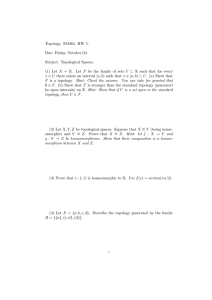
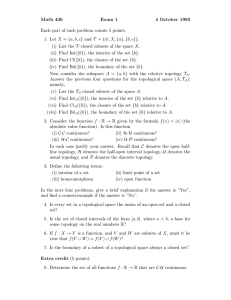
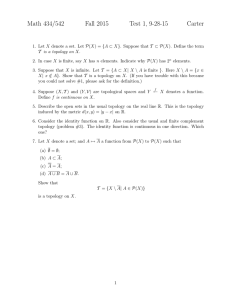
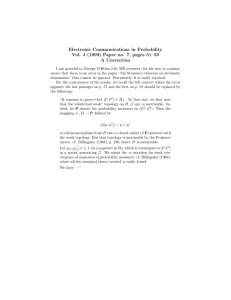
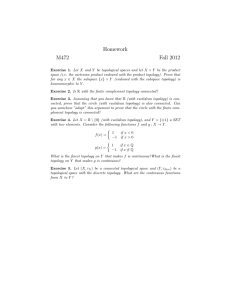
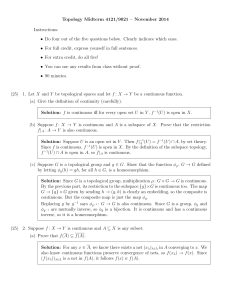
![MA342A (Harmonic Analysis 1) Tutorial sheet 2 [October 22, 2015] Name: Solutions](http://s2.studylib.net/store/data/010415895_1-3c73ea7fb0d03577c3fa0d7592390be4-300x300.png)
![MA3421 (Functional Analysis 1) Tutorial sheet 2 [October 9, 2014] Name: Solutions](http://s2.studylib.net/store/data/010731560_1-ebe198acce55c8f5d56f71f6e46fb8ac-300x300.png)
